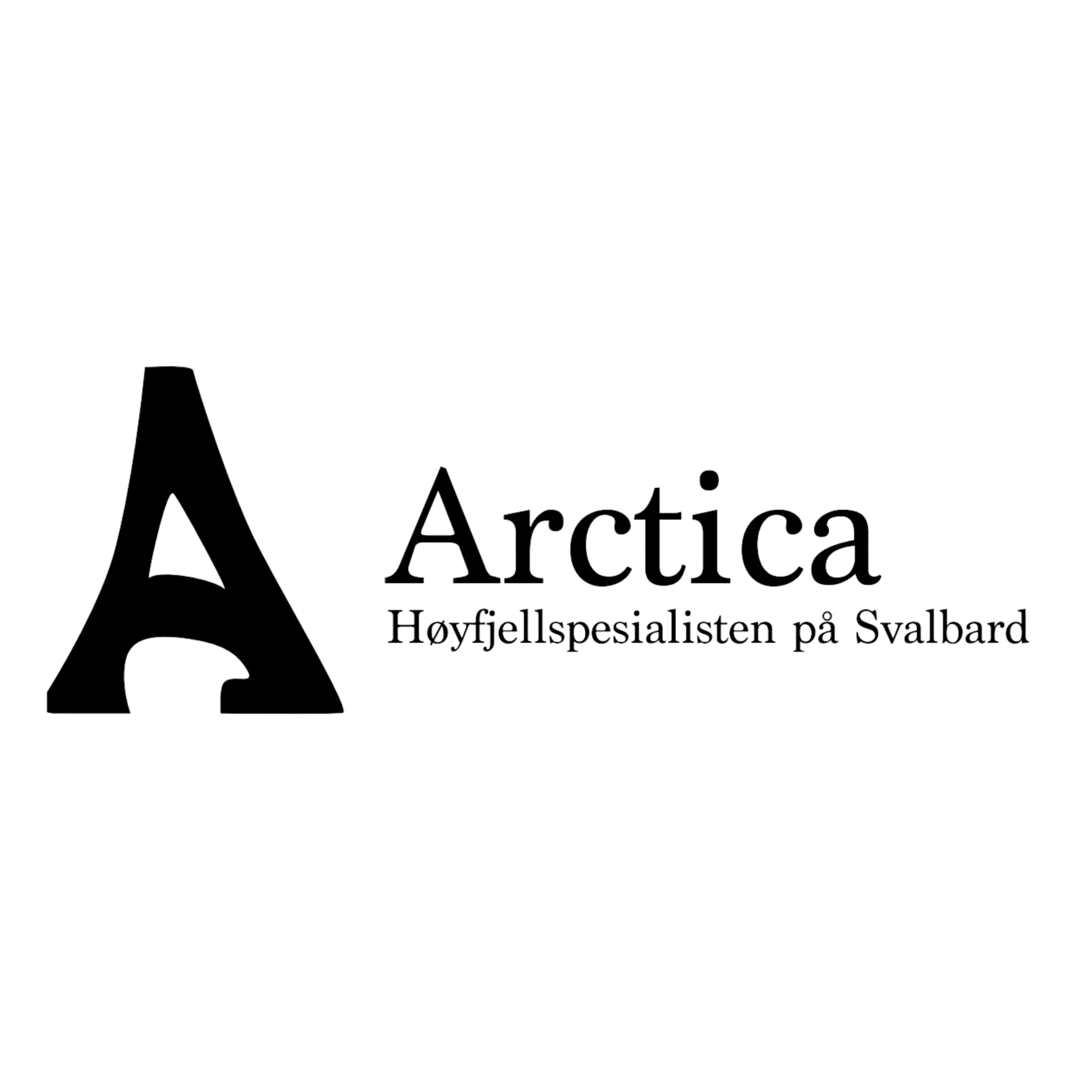
Northern Lights and Whys
text: Angie, Gjestehuset 102
“The north! the north! from out the north
What founts of light are breaking forth,
And streaming up these evening skies,
A glorious wonder to our eyes!”
HANNAH FLAGG GOULD, “The Aurora Borealis”
Seeing the beautiful northern lights is mostly on everyone’s bucket lists until it’s ticked. If not everyone, some people may not have realized it yet. These vibrant curtains of lights can be seen in the northern hemisphere at certain times in a year.
The northern lights season in Svalbard starts in late September. By this time, darkness tries to gradually rule the archipelago– little by little, each day. In clear nights come these magic lights. The sky shows off a beautiful twist– lights in colours green, pink and purple gracefully dominate the dark, arctic heavens. Always mesmerizing in the eyes of everyone.
This phenomenon looks purely magic, but there is science behind this. So, what causes this phenomenon to appear?
What causes the Northern Lights?
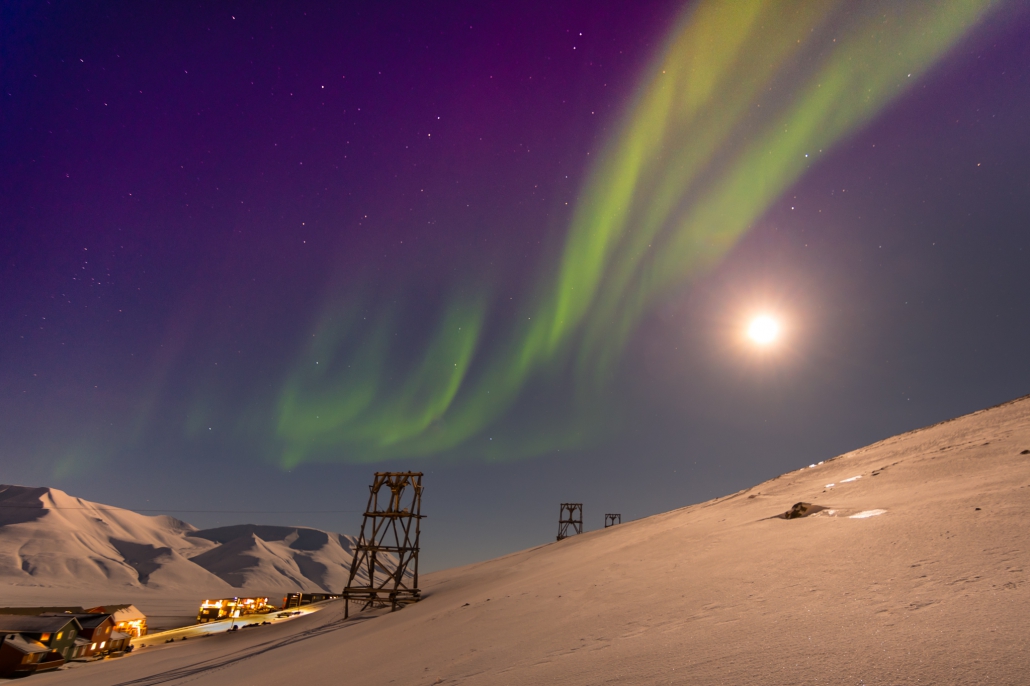
The Northern Lights have inspired, enchanted, and even scared humans for centuries. The earlier civilizations see these lights as either a bad or a good omen. Some believed that it was a sign a plague or a war is coming. Some believed that if a child was born under the lights, the child would inherit grace, intelligence, fortune, and beauty. Some civilizations also believed the opposite.
Why Aurora Borealis?
Aurora Borealis was named after the Roman goddess of dawn, Aurora, and the Greek name for the word ‘north wind’, Boreal. Aurora Australis is the name of the same phenomenon that occur on the opposite pole.
The one responsible for the existence of these lights is the same celestial element responsible for life’s existence and its biodiversity on Earth– the Sun. During our early, innocent years in primary school, we saw the Sun as just a large, yellow mysterious ball placed on the center of the solar system with a smiley face on it. Didn’t we? However, of course, the Sun is a lot more than this.
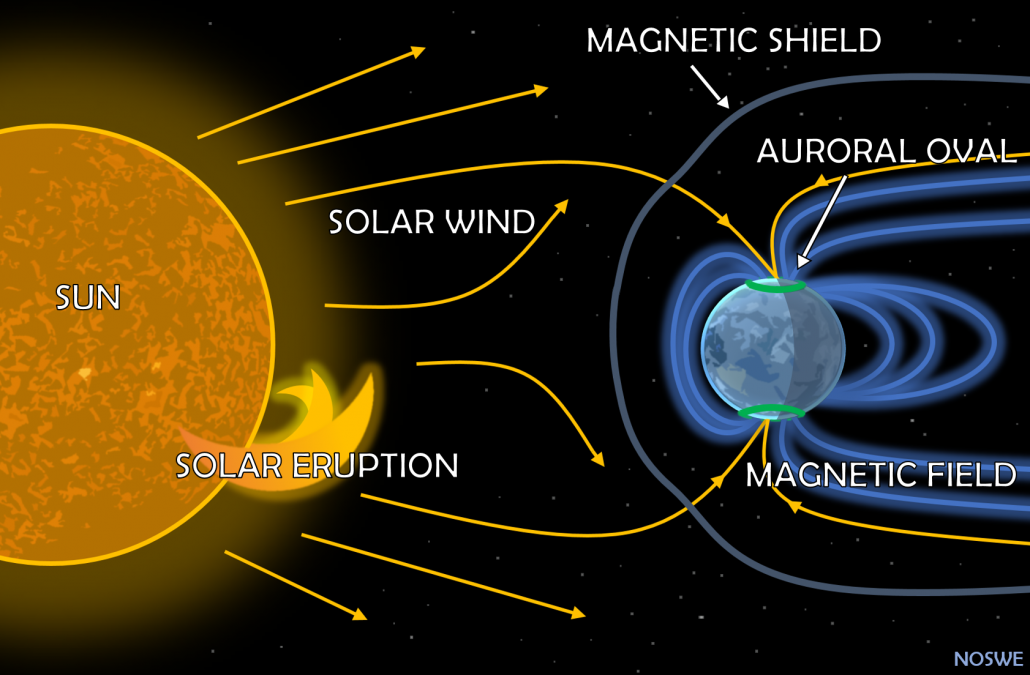
Strange and violent things happen in the Sun every second of every day. Like, for example, the sun releasing a stream of charged particles from its upper atmosphere. Oh, the sound of science! The sun is not just a bored, yellow ball with a smiley face after all. Sorry kids!
This stream of particles, mostly consisting of electrons, protons, and alpha particles is called the solar wind and is pushed towards the earth. But this doesn’t end here. The solar wind does not produce northern lights until it collides with the gaseous particles in the Earth’s atmosphere. To sum it up, the northern lights result from the collision of the solar wind and the earth’s gases in the atmosphere. Yey!
As we might have noticed, there are different color variations of Aurora. There’s also science in this. The color of the lights depends on the type of gas the charged particles are colliding with. Yellow and green are produced when the particles collide with oxygen. Red, violet, and sometimes blue colors are produced when colliding with nitrogen.
Altitude is also a factor to the colors. Red is at its highest altitude, appearing at above 240 km high. Green at lower altitudes at up to 160 km high. Purple lights at 95 km and above, and blue lights at up to 95 km.
The lights generally extend from 80 km to as high as 640 km above the earth’s surface.

Northern Lights above Sarkofagen in Nybyen by Polina Bublik
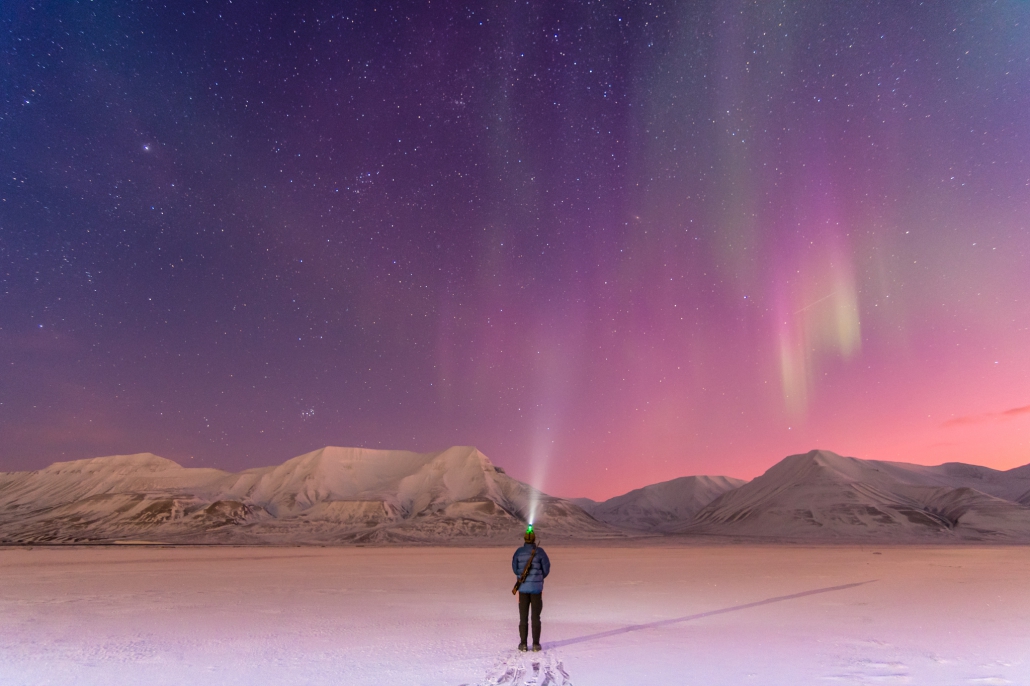
Northern Lights in Adventdalen by Eirik Lillehugo

Northern lights above Sarkofagen in Nybyen by Luca Coraci
Your Northern Lights Adventure in Svalbard
Since Svalbard is a “little too north” for northern lights, we usually need to face south to see them. Two of the best points to see the lights in Longyearbyen are in Nybyen, where Gjestehuset 102 is located, and in the Adventdalen, a valley located east of Longyearbyen.
Nybyen is located at the foot of the town. During the polar night, the area is at its darkest, away from light pollution, making it ideal for northern lights hunting and stargazing. If there’s an aurora activity, chances are you’ll get to see the lights yourself from your room window when staying at Gjestehuset 102. Or, just walk a little south, on the way to the mountain Sarkofagen, and you’ll get a better view of them. Don’t forget to wear your reflective vests when going outside!
In the dark season, tour operators offer various activities that look for northern lights. These activities can be done by bus, dog sledding, snowcat, snowmobile, or by foot.
To get the most of the activity, you can check the forecast for the northern lights ahead. The northern lights, just like any natural phenomenon, cannot be summoned. There are good days, there are bad days. It all depends on the activity of the sun and the weather. The thing is, if the night is clear and starry, the chances of catching them are high. To check the forecast, you can download an app on your phone called Aurora Forecast. It shows the probability of seeing the lights on a certain time, and even in the next days for the long term forecast.
There is also a website that gives you a real-time view of the night sky in Longyearbyen. Check kho.unis.no/kho_sony.htm. Northern lights can be captured on the camera, so if you see greeny, purplish waves on the website screen, those are the lights! When staying with us, at Gjestehuset 102, be quick and check your window for the lights. You can also go outside to check further. The reception loves to help and share with you if there is an activity of lights up there.
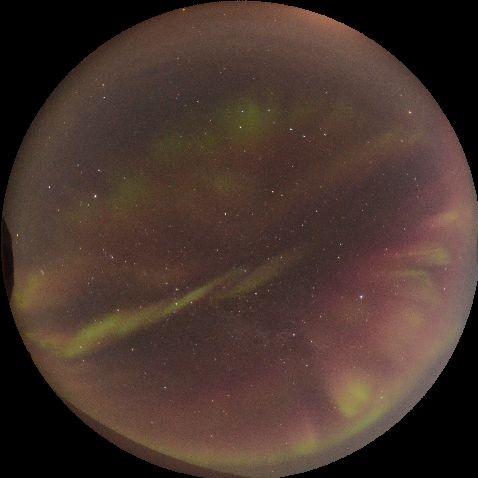
Things to remember when hunting for the lights
In Longyearbyen, excellent northern light show usually comes along with freezing temperatures. During winter, the average temperature usually ranges from -11 degrees Celcius to -30 degrees Celcius. When hunting for the lights, do not forget to dress warmly! Wear layers of warm wool underclothing under your warm, windproof jacket and pants. Protect the rest of your skin by wearing a good pair of warm mittens, buff, and hat. Always remember to wear warm snowshoes as well, partnered with good, warm wool socks. You cannot go around with your favorite pair of sneakers during winter. It won’t do. Here is a guide on how to dress in Svalbard during winter:
For last-minute shopping, you can visit Arctica, one of the leading clothing and equipment shops in Longyearbyen. You will find everything you need for an outdoor activity in the shop. From clothing, gadgets, camping accessories, hiking equipment, and more- all from well-known manufacturers to deliver high-quality products. The shop is located inside ‘Lompensenteret’, a shopping center located in the heart of Longyearbyen. If you are staying with us at Gjestehuset 102, ask us for a voucher with 5% off of everything from Arctica.
And lastly, wear a reflective vest. During the dark season, everyone is encouraged to wear such a vest when going around the town for safety. You are almost as invisible when walking without a vest on the polar night and so, this angers some locals/drivers. Reflective vests can be bought at the reception for only 75,- NOK.
If you want to keep a memory of your northern lights experience by taking some photographs, do not forget to bring a tripod! You need stability for your camera to be able to capture the lights nicely and sharply, at least one for your phone. Most phones now come with long exposure settings

Arctica is located at Lompensenteret, a shopping centre located at the heart of the town.
Book a room
Our favorite photos of northern lights




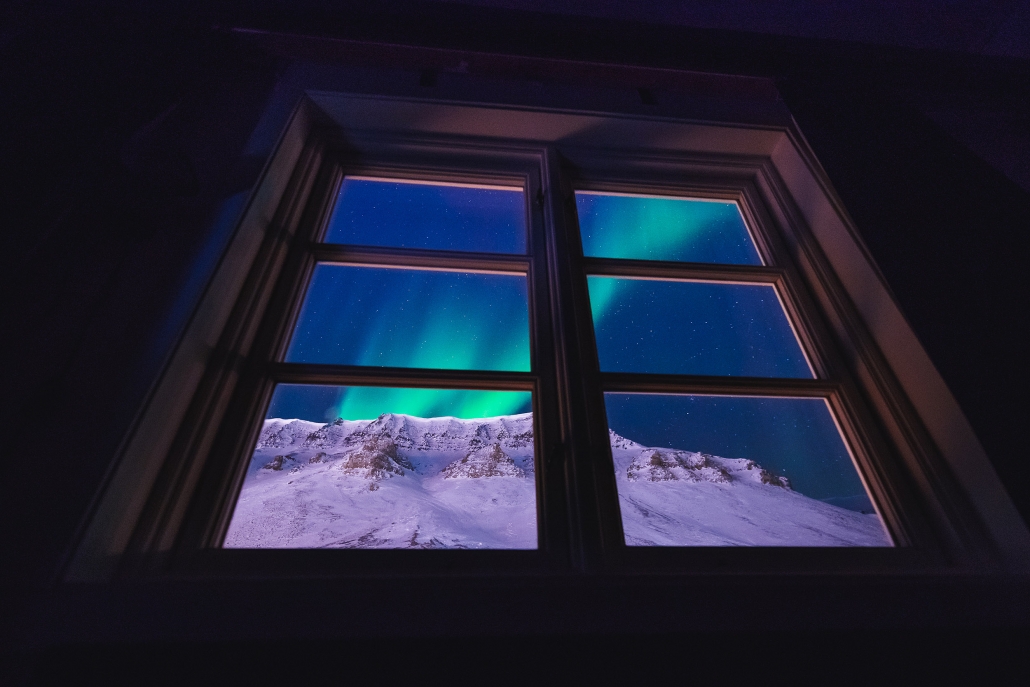

Food for thought
There is no guarantee to see the northern lights in Svalbard during your visit days, as they do not appear every day. As mentioned, it depends on the Sun’s activity. The weather could also be a big factor. Though the lights are up there, we might not see them as they are blocked by thick, grumpy clouds. But if the skies are clear, the wait might be worth taking for.
Published by:

Angie M.
Working at the reception since 2018, Angie has been able to make friends from around the world through the hostel‘s guests. Upon entering Gjestehuset 102, make sure to feel yourself ’at home’ as Angie will warmly be welcoming you with her friendliest smiles!




